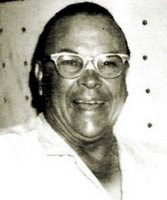In order for cancer cells to die they must implode or go through apoptosis.
Apoptosis: A form of cell death in which a programmed sequence of events leads to the elimination of cells without releasing harmful substances into the surrounding area. Apoptosis plays a crucial role in developing and maintaining health by eliminating old cells, unnecessary cells, and unhealthy cells. The human body replaces perhaps a million cells a second. Too little or too much apoptosis plays a role in a great many diseases. When programmed cell death does not work right, cells that should be eliminated may hang around and become immortal. For example, in cancer and leukemia. When apoptosis works overly well, it kills too many cells and inflicts grave tissue damage. This is the case in strokes and neurodegenerative disorders such as Alzheimer, Huntington and Parkinson diseases. Apoptosis is also called programmed cell death or cell suicide. Strictly speaking, the term apoptosis refers only to the structural changes cells go through, and programmed cell death refers to the complete underlying process, but the terms are often used interchangeably.
Renal cancer cells must be investigated also in order to help determine better outcomes as to why cells are resistant to apoptosis. Apoptosis is usually brought on by a naturally produced protein called TNF which stands for ...you got it tumor necrosis factor.
When cells become resistant to TNF, TNF then acts to help spread the growth of the cancer between cells and across membranes. (Please call or write for more info on this pete4doc@hotmail.com
When cells become resistant to TNF, TNF then acts to help spread the growth of the cancer between cells and across membranes. (Please call or write for more info on this pete4doc@hotmail.com
It could be that monoclonal antibody to TNF receptors may be a cure for some leukemias and cancers
Otherwise this is the way things occur normally in Multiple Myeloma cells
1. Activation of JNK
2. Translocation of JNK (PKC epsilon is involved in JNK activation that mediates LPS-induced TNF-alpha, which induces apoptosis, from cytosol to mitochondria,
3. Release of Smac from mitochondria to cytosol
































































No comments:
Post a Comment